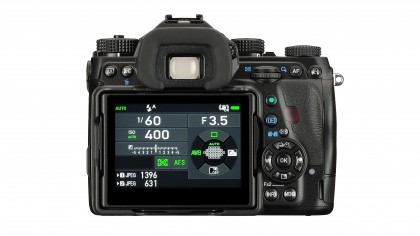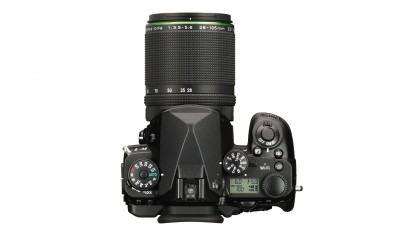TechRadar Verdict
The Pentax K-1 has an excellent collection of features that will appeal to serious photographers, and it feels good in your hand. It makes a great choice for landscape and still life photographers, but sports shooters should look elsewhere for a fast AF system.
Pros
- +
Full-frame 36MP sensor
- +
Impressive feature set
- +
Competitive price
Cons
- -
Slow autofocusing system
- -
Menus look dated
- -
Loose Mic port cover could compromise weather-proofing
Why you can trust TechRadar
Pentax is one of the big traditional photographic brands to make the transition from film into digital camera manufacturing, and it always seemed likely that it might one day make a full-frame digital SLR. However, it wasn't until February 2015 that the company announced that it was planning to take that step – and now, after a year of looking at mock-ups under glass domes at trade shows, we finally have the Pentax K-1.
Specification-wise the new camera has plenty to attract enthusiast photographers – especially those who still have a collection of full-frame K-mount optics. For starters, the full-frame (35.9 x 24mm) 36 million-pixel sensor (supplied by Sony), 14-bit PRIME IV processing engine and 33-point SAFOX 12 autofocus system are new.
Furthermore, to enable greater detail resolution the sensor has no anti-aliasing (AA) filter; instead Pentax has included its AA filter simulator to reduce moire patterning when needed. This system uses a combination of in-camera software and micro vibrations at a sub-pixel level during the exposure to reduce moire patterning.

Pentax likes to make good use of the ability to shift the sensor in its cameras, and it's no different with the K-1. The primary purpose of the technology is to compensate for accidental movements, and the Shake Reduction II system acts across 5 axes, having a claimed 5-stop impact.
There's also the clever Astro Tracer system, which uses data from the GPS system to guide the movement of the sensor during exposures of up to five minutes to record stars as sharp dots rather than streaks. And let's not forget the sensor-shifting composition adjustment and level correction options.
Pentax's Pixel Shift Resolution system is also on hand to produce better colour by enabling each pixel to record the full colour information. This works by taking four images in quick succession, with the sensor moving by one photosite's width between each shot. Pentax has improved the system to the extent that it's now claimed to be usable when the camera is hand-held, and for moving subjects; nevertheless the company still recommends using a tripod for the best results.

Although the PRIME IV processing engine is said to be 50% faster than the PRIME III, the K-1 can only muster a maximum continuous shooting rate of 4.4 frames per second (fps), so it's unlikely to be the first choice of serious sports photographers. Video recording is also a little limited, with Full HD (1920 x 1080) maxing out at 60i/30p in the H.264 format. There is, however, a mic connection and headphone port, as well as the option to shoot 4K time-lapse sequences.
Sign up for breaking news, reviews, opinion, top tech deals, and more.
One benefit of the new processing engine is that it enables a new noise reduction algorithm to be employed and this, together with the larger pixel size enabled by the bigger sensor, has given Pentax the confidence to offer a maximum sensitivity setting of ISO204,800 – yes, that's a native, or standard, setting.

Metering is handled by an 86,000-pixel RGB sensor which supplies data to the Real-Time Scene Analysis, keeping an eye on subject colour and brightness.
Being an SLR, the K-1 has an optical viewfinder. Pentax has opted for the high-quality pentaprism type rather than a pentamirror, and it gives 100% coverage. On the back of the camera there's a 3.2-inch 1,037,000-dot LCD that's mounted on a novel tilting mechanism – more on this later.
It hardly needs saying these days, but the K-1 has built-in Wi-Fi connectivity that enables images to be transferred to a smartphone or tablet, and for the camera to be controlled remotely. There's also the GPS unit mentioned earlier, and a digital compass to record which way the camera is pointing when a shot is taken.
